副業是在香港中文大學教書,主業是玩貓。
Unreal China - Tianjin Binhai Travel Notes
Due to the spread of the Wuhan pneumonia epidemic, major cities around the world have suddenly become like ghost towns, and the streets that were originally bustling have become empty. People build cities, in principle, to make people live; of course, there are no people in the city, which is not a good sign. The sudden appearance of people going to the building is certainly shocking, but how should we understand that no one has cared about it from the beginning? Last summer, I traveled to Tianjin, and I spent a day in Binhai New Area in search of the legendary "Yujiapu Ghost City".
From downtown Tianjin to Yujiapu, it takes less than half an hour by high-speed rail. It's just that it took me a while to buy a high-speed rail ticket. It is said that the high-speed railway station in Binhai New Area was originally called Yujiapu Station, but it was renamed Binhai Station at the beginning of last year, which made me unable to find it on the railway website for a while. Just the change of the name has vaguely reminded me: Hey, did they also find that there is something wrong with the brand Yujiapu?
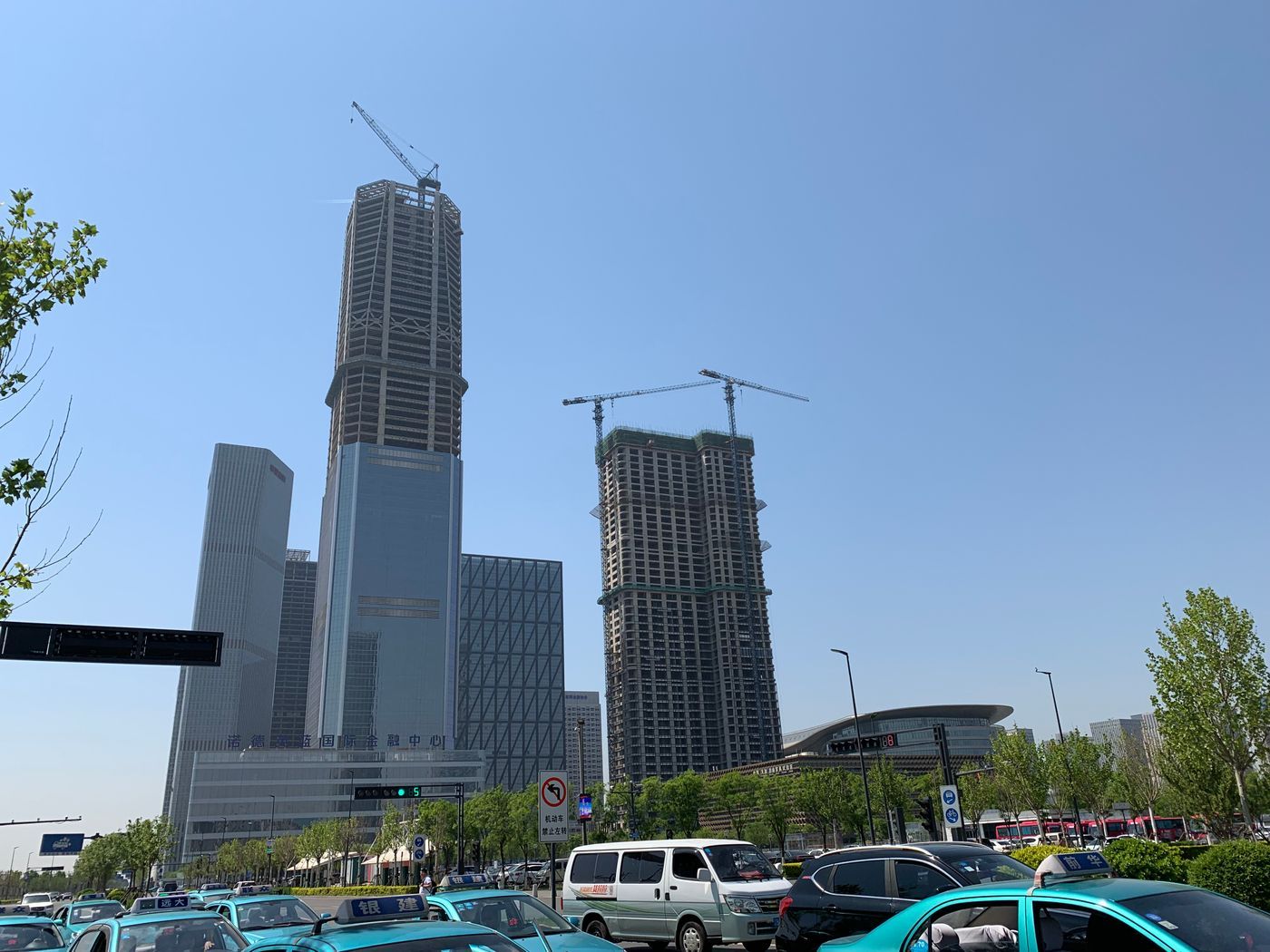
When I came out of the high-speed rail station, the construction sites were dusty everywhere. If I hadn’t read the information before, I would have thought that all industries must be flourishing here. How could it be called a “ghost town”? On the other hand, since there is already a serious surplus of office buildings here, why is there still a rush to build new office buildings? I didn't think too much about these questions at the time, because I was rushing to the first scenic spot I was going to: Dagukou.
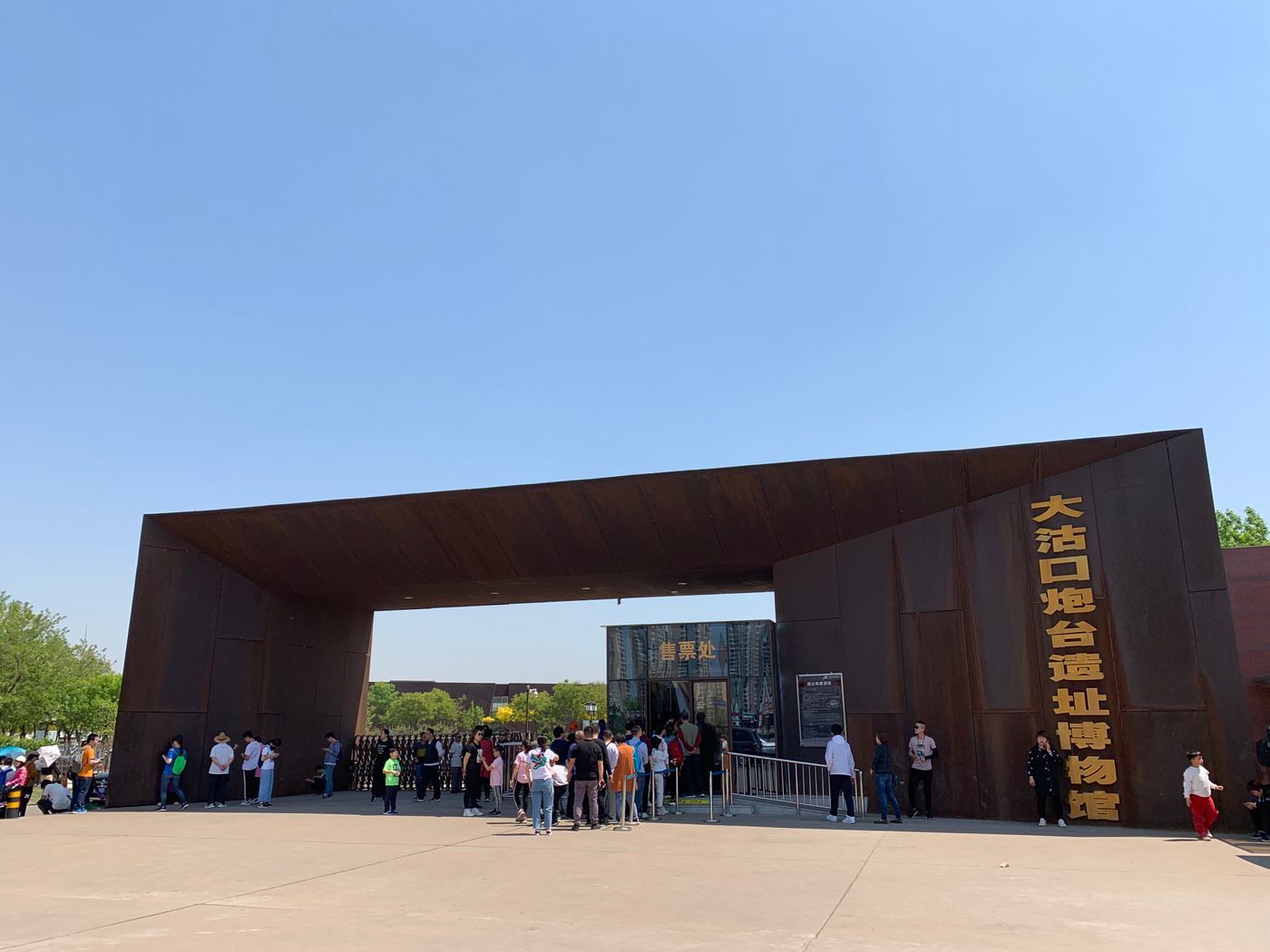
I'm going to Dagu because I'm from Hong Kong. The existence of Hong Kong has something to do with Dagu. Before the start of the first Opium War, the British army negotiated with the Qing court here; in the second Opium War, this was one of the main battlefields. The two Opium Wars brought about the signing of the "Nanjing Treaty" and the "Beijing Treaty", as well as today's Hong Kong.
When you come to Dagukou, you can take a taxi or take a bus according to the introduction of the museum. I foolishly followed the directions and took the bus, taking in the view of the harbour. After arriving at the terminal, I found that the place where I got off the bus was separated from the museum by a highway. Heavy trucks kept passing through it at high speed. Of course, the crossing facilities were lacking. I felt that it was a miracle that I could walk to the gate of the museum alive.
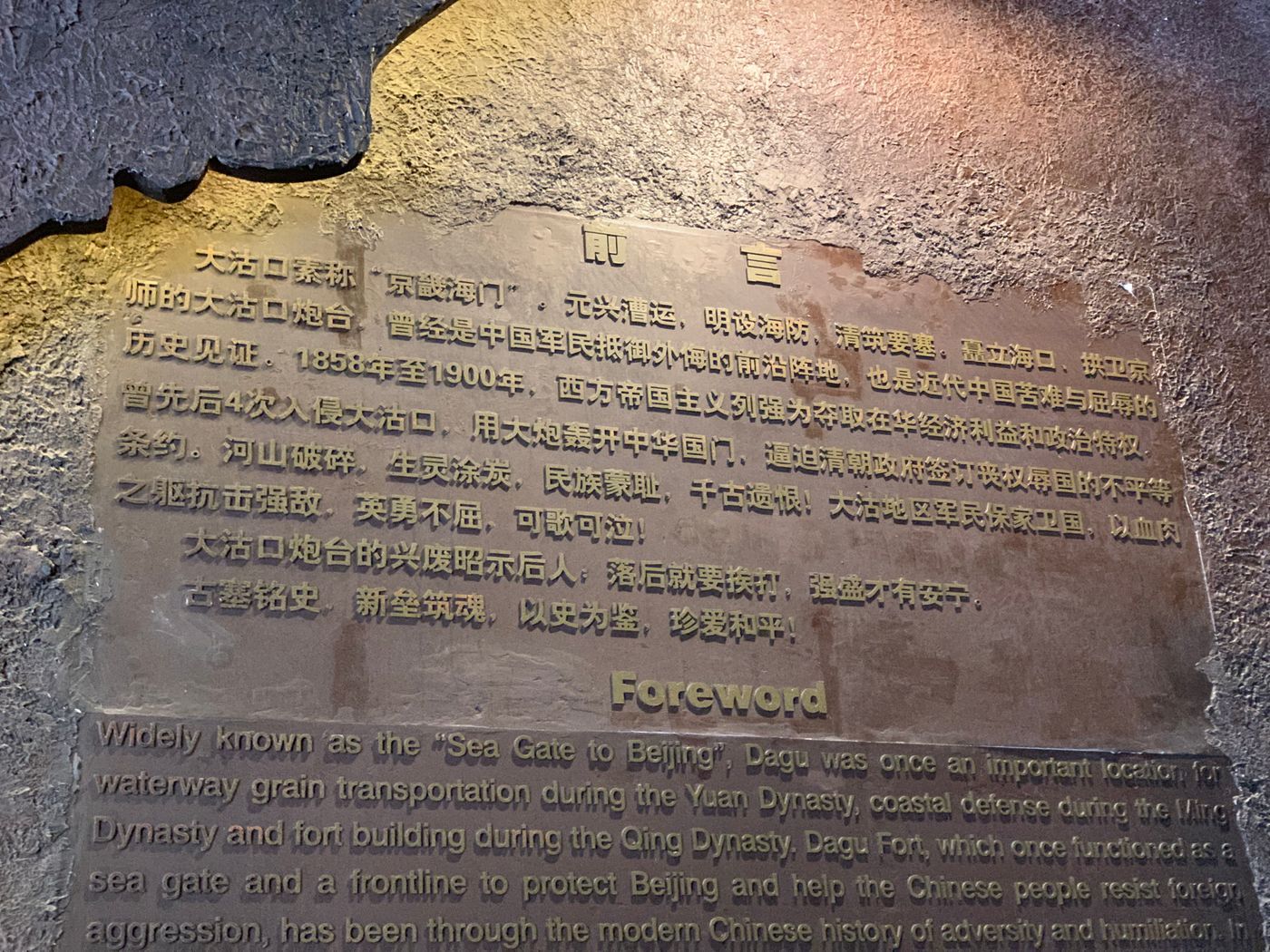
Modern China has a whole set of "national humiliation worldview", which describes Chinese history since the late Qing Dynasty as a history of humiliation that was constantly suppressed by foreign countries. There are many academic criticisms of this worldview. For example, on the one hand, it concealed many (more than now) progressive social systems in China at that time, and deliberately suppressed the development achievements that had appeared at that time, while the later development of domestic politics was ignored. The greater sufferings that he has caused (ranging from the siege of Changchun to the Great Leap Forward to the Cultural Revolution) do not have the same serious criticism and reflection. Of course, these academic criticisms are basically ignored, because this "worldview of national humiliation" is very useful to those in power, because all mistakes can be explained as foreign powers to blame, and all opposition voices are out of Incited by foreign forces, if you still have doubts, it is an enemy of national rejuvenation. As for those in power who really hinder the people from reflecting on the past and thinking about the future, they are more and more stable.
Under this "worldview of national humiliation", the Dakukou, which witnessed the beginning of China's "era of humiliation", does not need to think too much about its narrative discussion. However, I still feel very sad to see the sentence in the preface, "If you fall behind, you will be beaten. When you are strong, you will have peace." It's already 2019, why is the concept still so backward? All of a sudden, we are back to the world of a hundred years ago, which was a world where the boat is strong and the gun is sharp, and the various criticisms of China's social and political system, the update of the theory and practice of international relations in the past one hundred years, liberalism and socialism. The emergence of the constructivist concept of state relations seems to have never happened.

Speaking of the Opium War, in recent years, historians have made extensive analysis on the background of the Opium War. For example, opium was not brought to China by Britain, the role of the corruption of the Qing government, etc. Of course, these are not explained in the exhibition. China only has to play a simple victim role. When it comes to the Opium War, of course, we must mention the burning of Yuanmingyuan, which is also used as a case of shame. The problem is that neither the people of the Qing Dynasty who had a share in the looting at the time, nor the warlords of the Republic of China who later used the Yuanmingyuan as a building material supply ground, neither were foreigners. To blame all "national humiliation" on foreign powers is somewhat unreasonable. Concealing evil and promoting good is not a new thing in Chinese history. Lin Zexu also boasted many times in his memorials how he had defeated the British army. All kinds of "good news" were later exposed as misinformation by historians. It is a pity that I came to this museum, which was originally intended to teach the people to face history squarely. The handling of historical facts turned out to be the same as concealing evil and promoting good.

The above criticism, of course, is to treat it as a real museum. If you look at it as a patriotic education base, this museum is quite "successful".
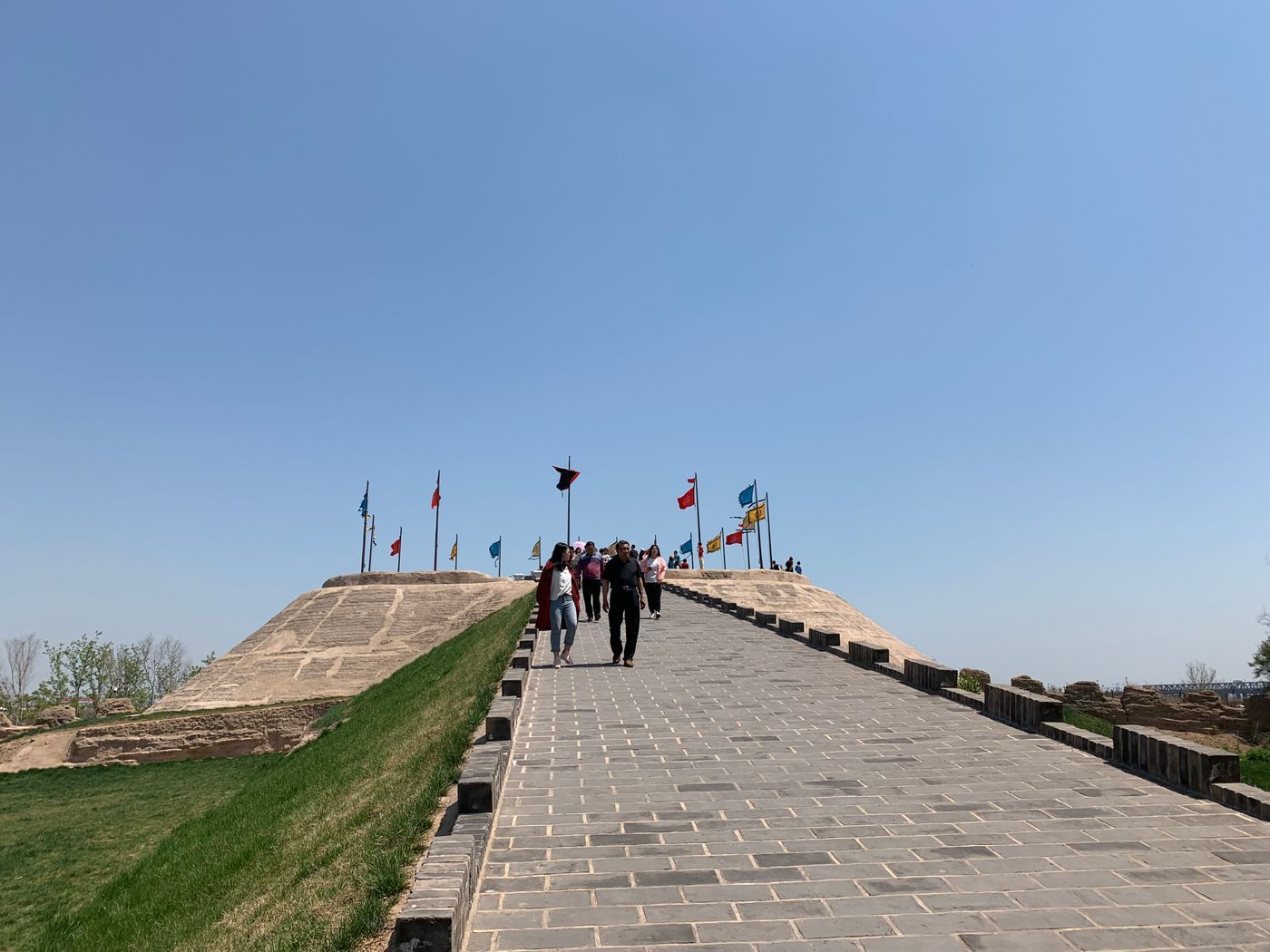
Outside the museum, there is an imitation fort "ruins", which is a high platform that allows visitors to climb up to see the scenery. I have nothing against this "fake antique", I guess there won't be too many tourists mistakenly thinking this is a real site, right?

After leaving Dagu, I went from the most historic and oldest attraction in Binhai District to the newest and most fashionable attraction: Binhai New Area Library.
The library is located in the newly built cultural center, and I regretted a little when I entered: people! too! many! It happened to be a holiday that day, and many people came to visit, but I had to queue for 40 minutes to get in.

The most famous part of the library is the "Universal Hall" located in the atrium, which is regarded as the latest Internet celebrity check-in hotspot in the country. I actually don't know what the ball in the middle is for, because it separates the seats on both sides of the atrium. If you want to set up a stage in the middle to hold cultural lectures, it is not practical. Then read books in these seats. But I found that basically none of the people in the seats were reading books, and everyone was taking selfies. One is that there are too many people in this atrium and it is a bit noisy; the other is that there are no books at all.
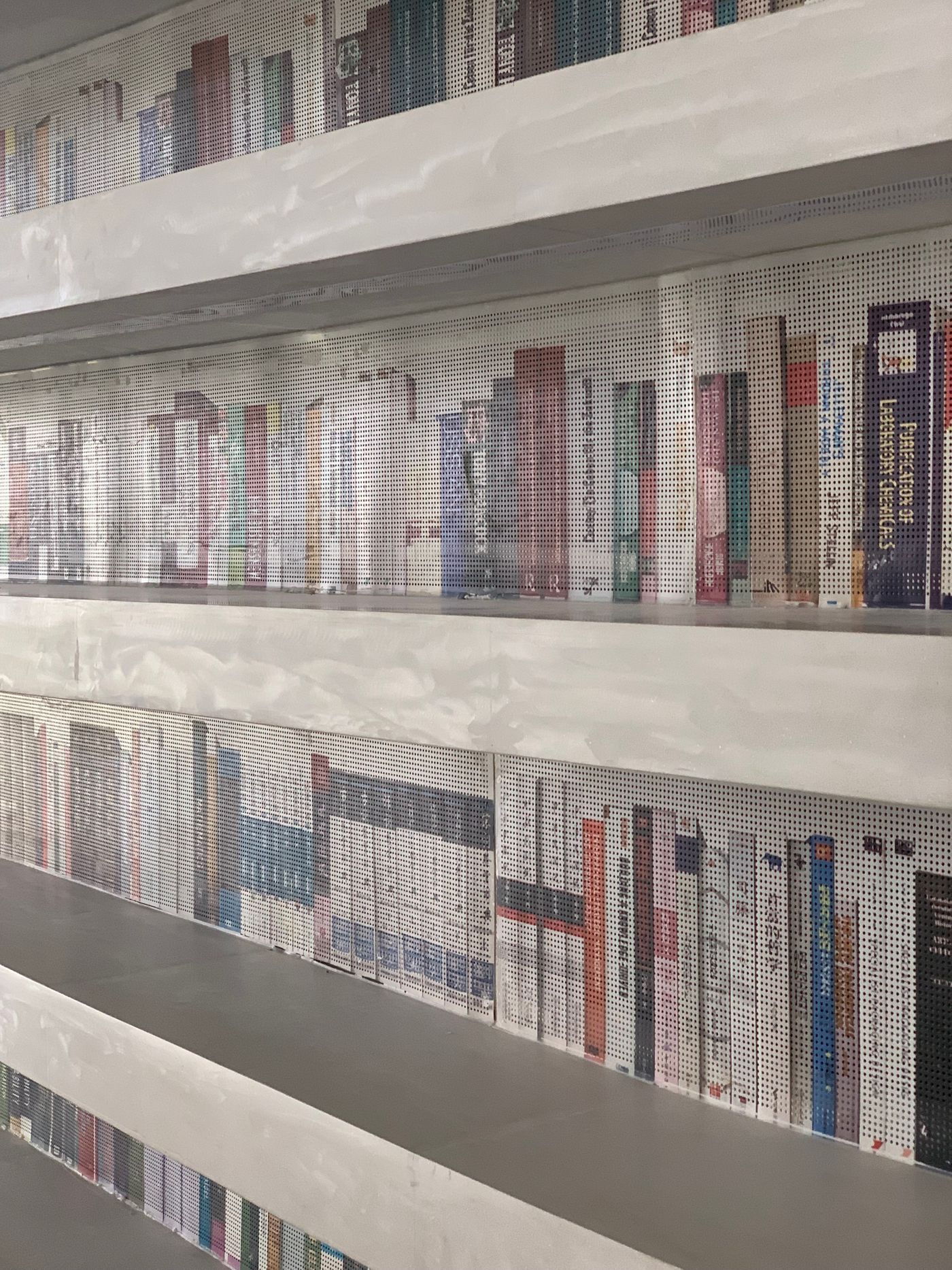
Yes, what looks like a book between the seats is not a book, but a wire mesh with a book pattern printed on it. I also suspected before going in, not to mention that this design is difficult to find books, and those books on the top floor are impossible to get. Oh, so there are actually no books here.
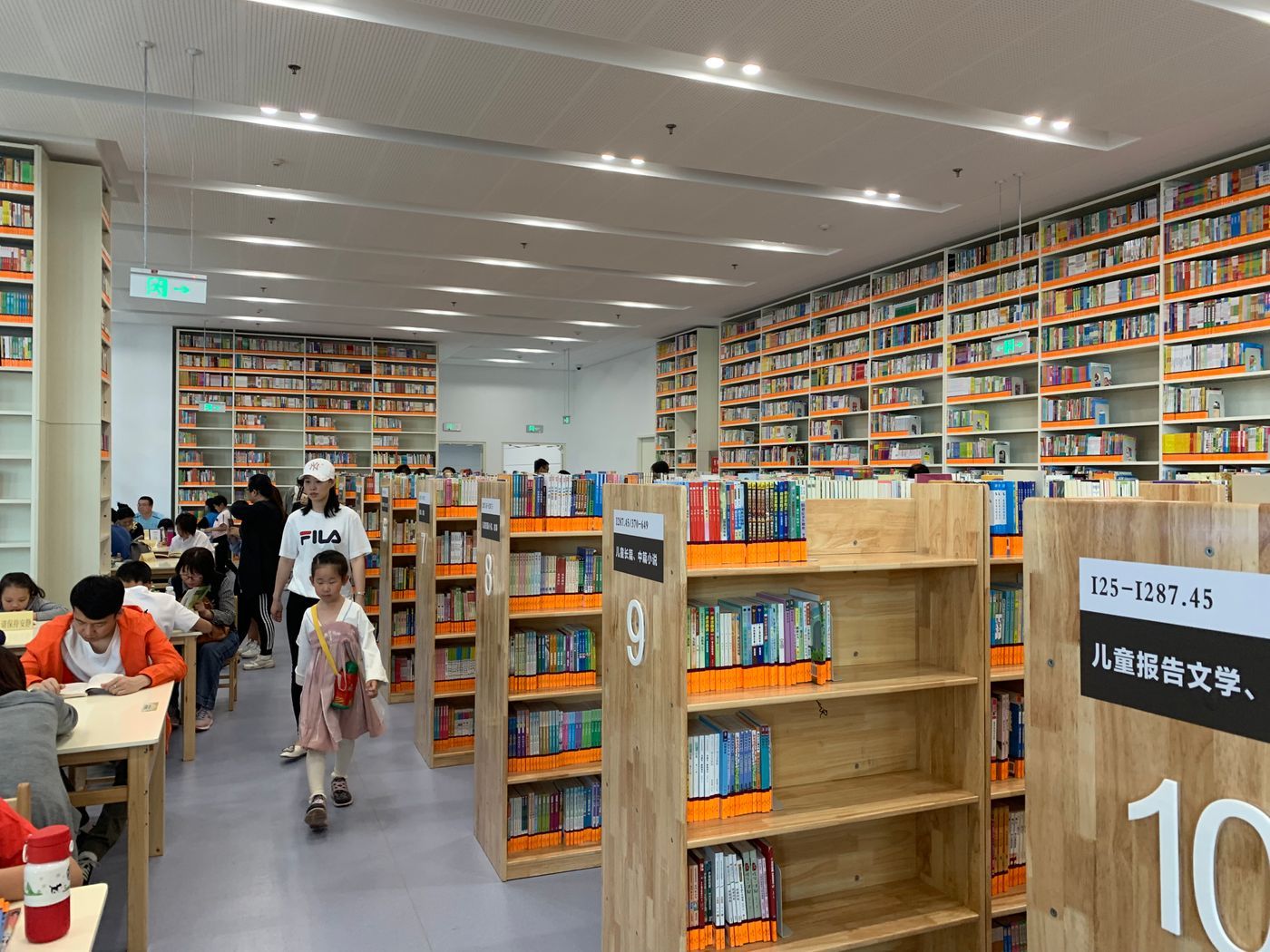
I walked around the place where the library actually collects books, and found that the space and the flow of people here are probably less than that of the central pavilion. Is it a waste of space? At least on this day, people will be willing to queue for 40 minutes to enter the venue, I believe they are not here to read books.
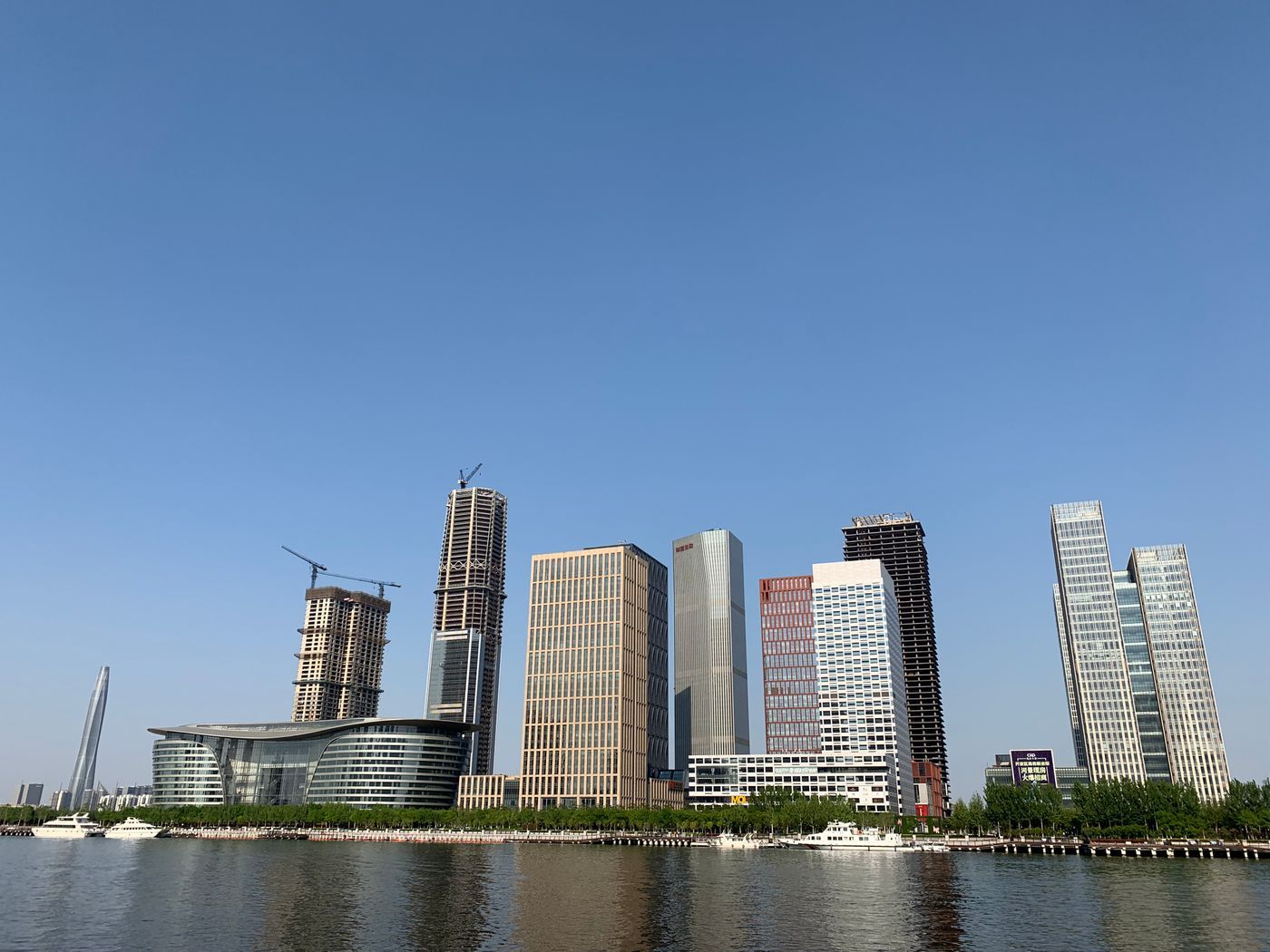
After leaving the library, I finally set off for Yujiapu.
It should be noted that there are actually three business districts in Binhai New Area, namely Yujiapu Financial District, Xiangluowan Business District, and TEDA MSD (Modern Service Industry District of Tianjin Development Zone). Why a new district in a city is considered to be able to accommodate three business districts at the same time is a bit bizarre in itself.
I have seen many discussions on urban planning on the Internet and also believe that this design has obvious errors in terms of functional positioning and geographical layout. First of all, the last time Tianjin could be called a financial center was in the late Qing Dynasty and the early Republic of China, and now China's financial centers are Hong Kong and Shanghai. Even if there is to be another one in North China, with the advance of the country and the retreat of the people, any commercial activities have already been absorbed by Beijing, and there is no room for another financial center. Even if you want to develop the financial industry in Tianjin, you can't see why it should be in Jiapu. The design of Yujiapu is obviously based on London's Canary Wharf, but Canary Wharf is only 5 kilometers away from London's traditional business district. It is very convenient to travel between the two sides. It doesn't take 15 minutes by car or subway. You can go back to the urban area for entertainment and communication at any time; Yujiapu is 45 kilometers away from downtown Tianjin. Even with the high-speed rail, you can only go back and forth on the same day instead of impromptu. It is destined to develop independently. Under the premise of limited hinterland and strong competition, there is also a problem in Binhai District supporting one business district, let alone developing three at the same time.

Walking into Yujiapu and Xiangluowan, there are newly constructed vacant buildings everywhere. I roughly estimate that among the ten skyscrapers I have seen, none of them have commercial activities. Sometimes I walk through the doors of some buildings and feel the air-conditioning blowing out of the building, but seeing that there is no one in the building, in addition to feeling that it is not environmentally friendly, it is even more creepy.
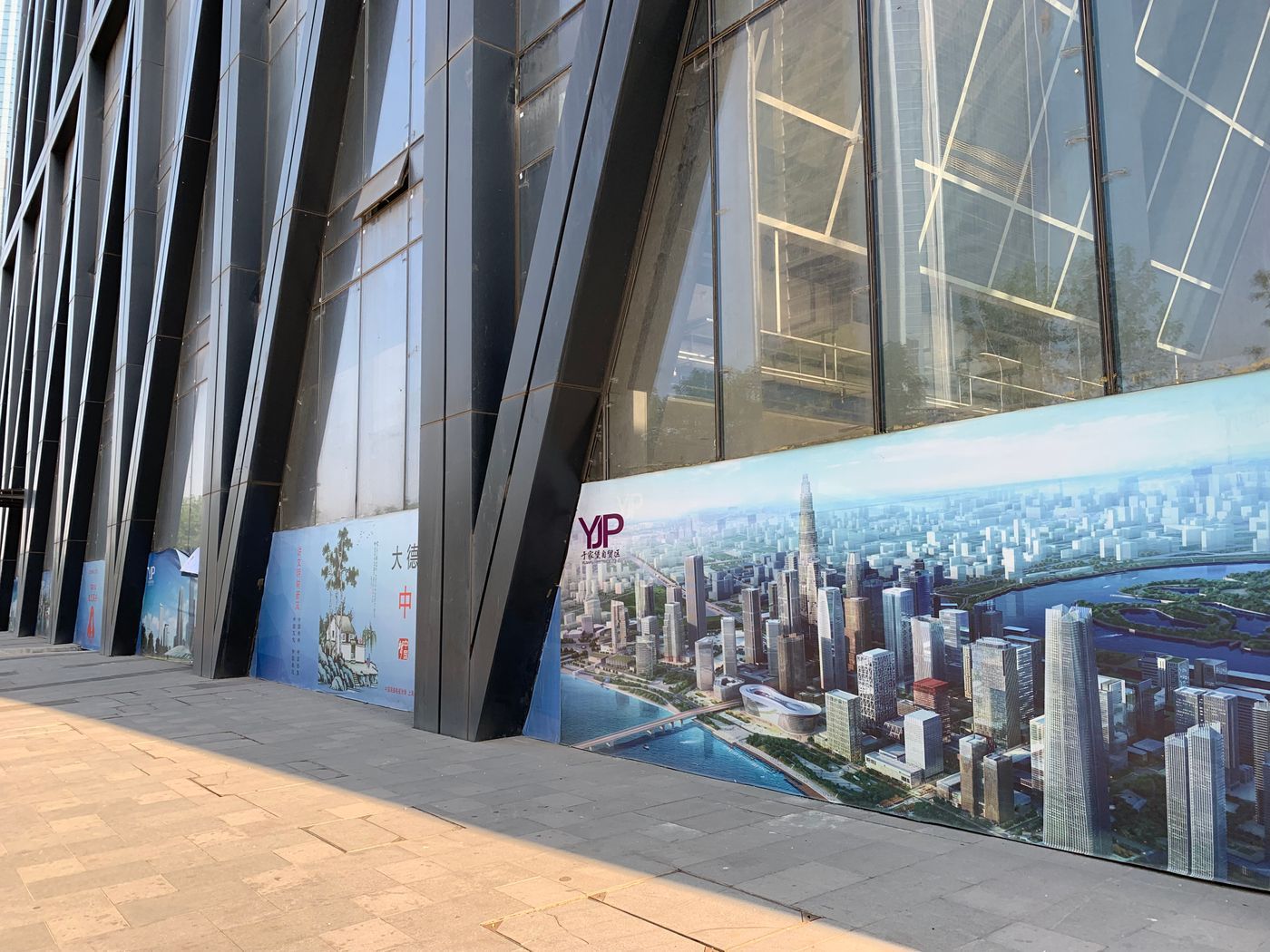
The vacant building is surrounded by hoardings, with the beautiful vision in the original plan painted on it. I kind of want to interview the designer who was responsible for drawing this mockup at the time and how he thinks now.
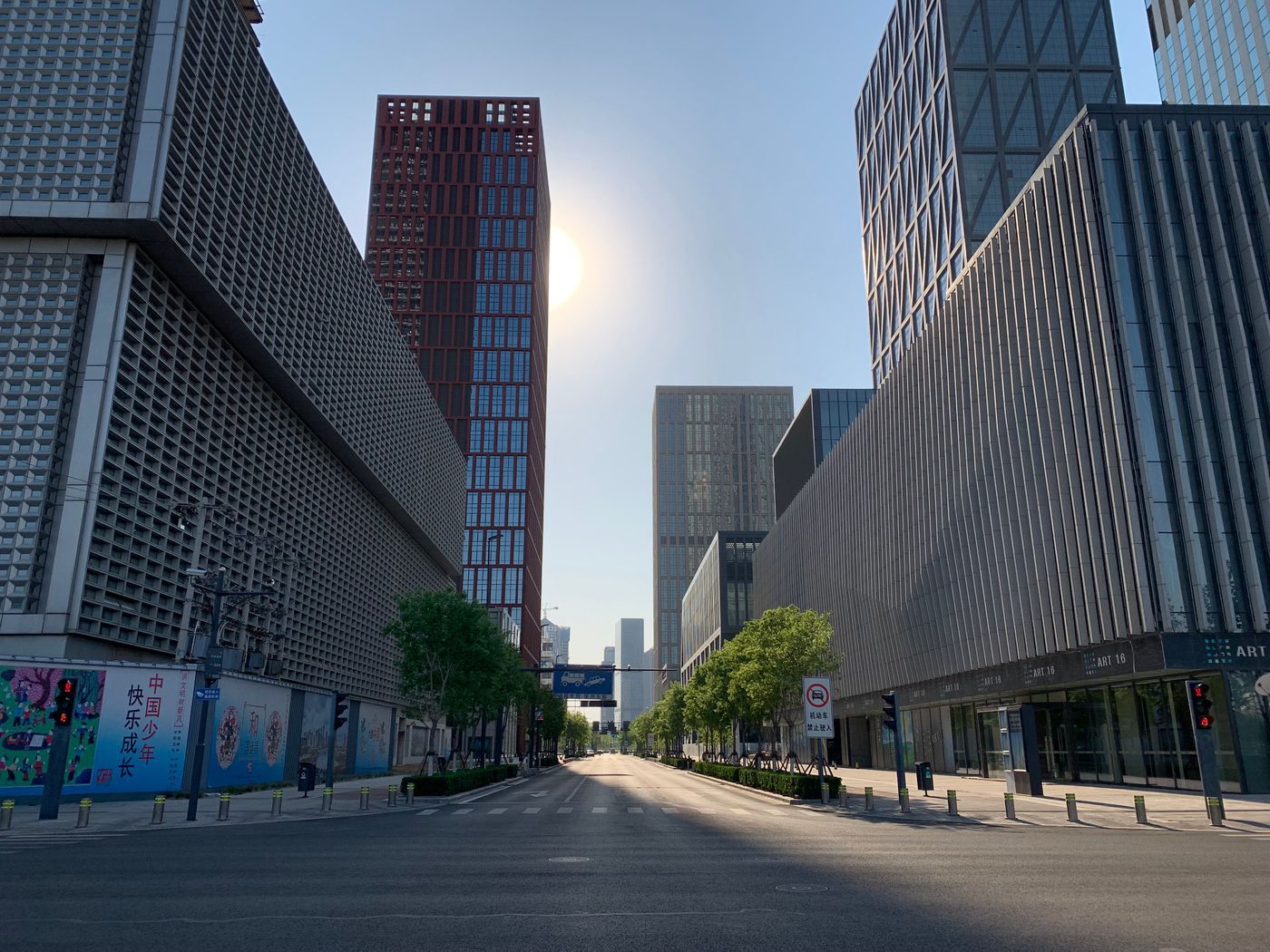
I walked for an hour on both sides of Yujiabao and Xiangluowan, and I saw less than twenty passers-by. The biggest feeling is that this place should be used to shoot zombie movies, which can save billions of real-life construction costs.
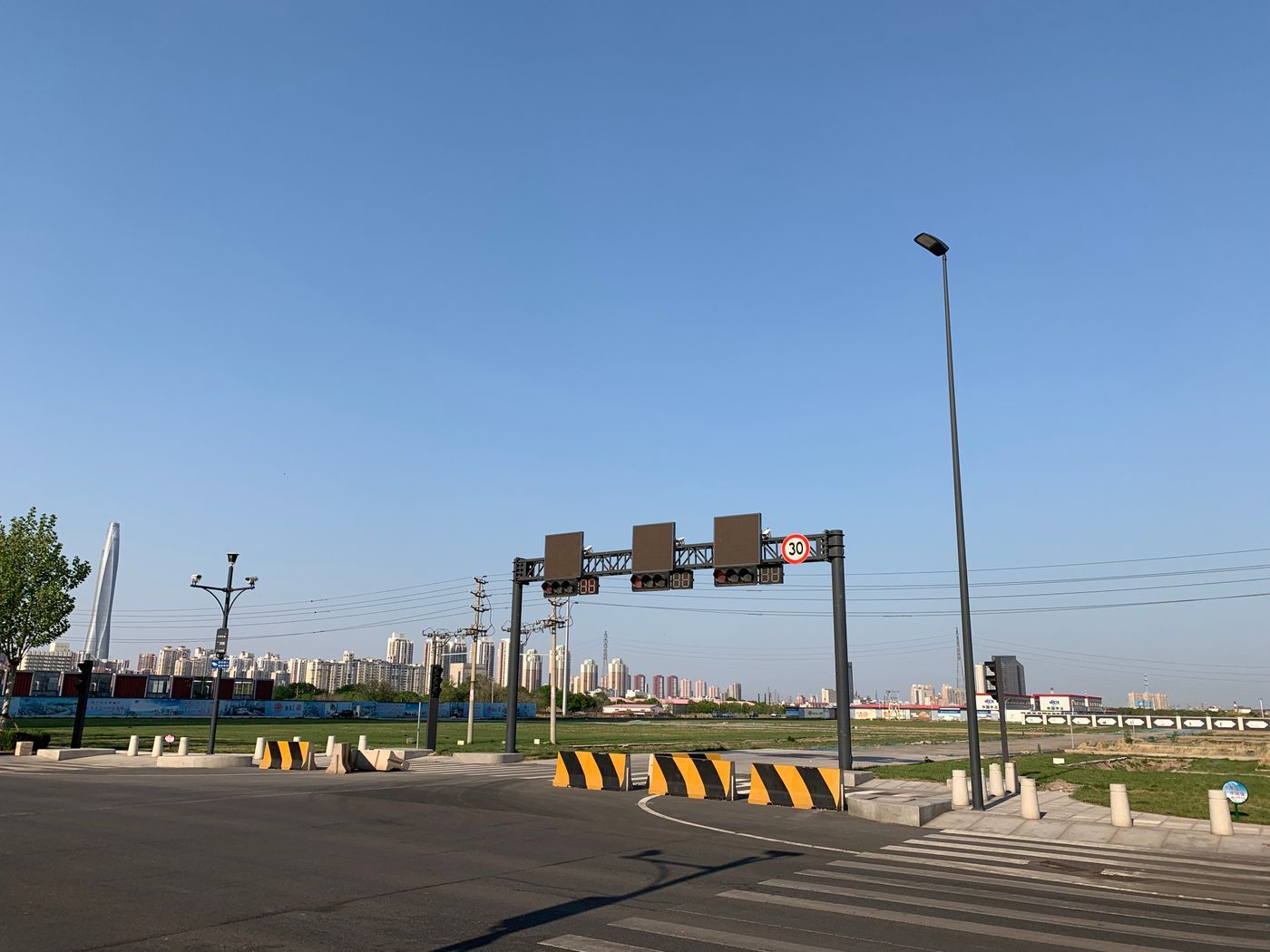
In fact, only half of Yujiapu's planned land has been developed, and the other half of the land has been leveled, and a neat road network has been built, but no one has come to invest. It is said that the planning here has been changed, from a commercial building to a residential building.

While there are already plenty of vacant units, new skyscrapers are still being built. What surprised me even more was that the tallest building in the Binhai area was not built on the Yujiapu side, but the TEDA MSD mentioned above, four kilometers north of Yujiapu.
I asked the driver what building it was in the taxi, and he was very excited and told me, "It was built by you Hong Kong people!" The building is the fourth tallest in China and the eighth tallest in the world. I asked the taxi driver again: Why do you want to build so high on the TEDA side? After all, there are still a lot of vacant units on the Yujiapu side that have not yet been digested! He replied: Iconic buildings. In this way, I am even more confused. If you want to build a landmark building, it should be on the Jiabao side, right? Yujiapu is positioned as a financial district, while TEDA is a service industry district. Is there a distinction between primary and secondary?
When I came to TEDA, I suddenly understood again. There are obviously more people here than in Yujiapu. There are houses and shops around, and the office buildings that have been built seem to have commercial activities, unlike Yujiapu's "ghost town". If I were a Hong Kong capitalist and wanted to respond to the country's call to invest in Binhai New Area, I'm afraid I would choose TEDA instead of Yujiapu.

I accept that there will be some "advanced design" in Chinese cities sometimes, but this is obviously not "advanced design", but wrong design, and there is obviously a spatial dislocation brought about by power relations behind it. The people pay the bill.
Pursuing development is not a problem, but what is development? When the development of a country is simply materialized as a ship, it should not be surprising that the development of a city is simply materialized as the building of the tallest building. Hu Jintao said the "scientific concept of development", and let's not say whether it has actually been implemented or not, this slogan has long since passed away.
Speaking of mistakes in urban development, I have one more place to go on this trip to Binhai New Area.
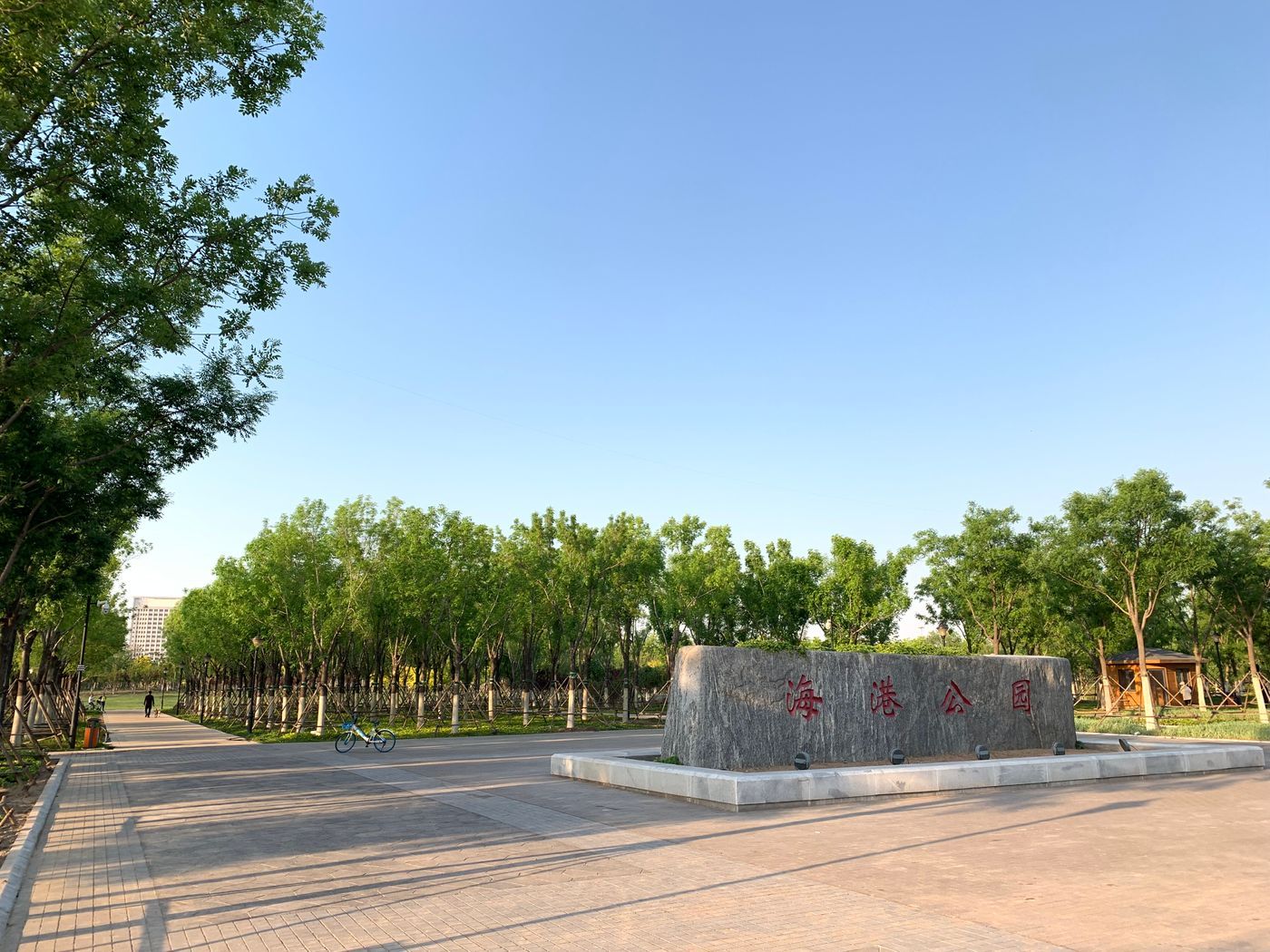
This place is called "Harbour Park", a name that is too ordinary to be ordinary. I even suspect that they deliberately gave the park such an ordinary name, because its location is anything but ordinary: this is the site of the 2015 explosion at a hazardous chemicals warehouse in Tianjin Port.
This place was originally an open-air warehouse, and a chemical explosion occurred in the middle of the night on August 12, 2015, killing 165 people, 8 missing and 798 injured. After the post-disaster cleanup was completed, the local government rushed to build a park here.
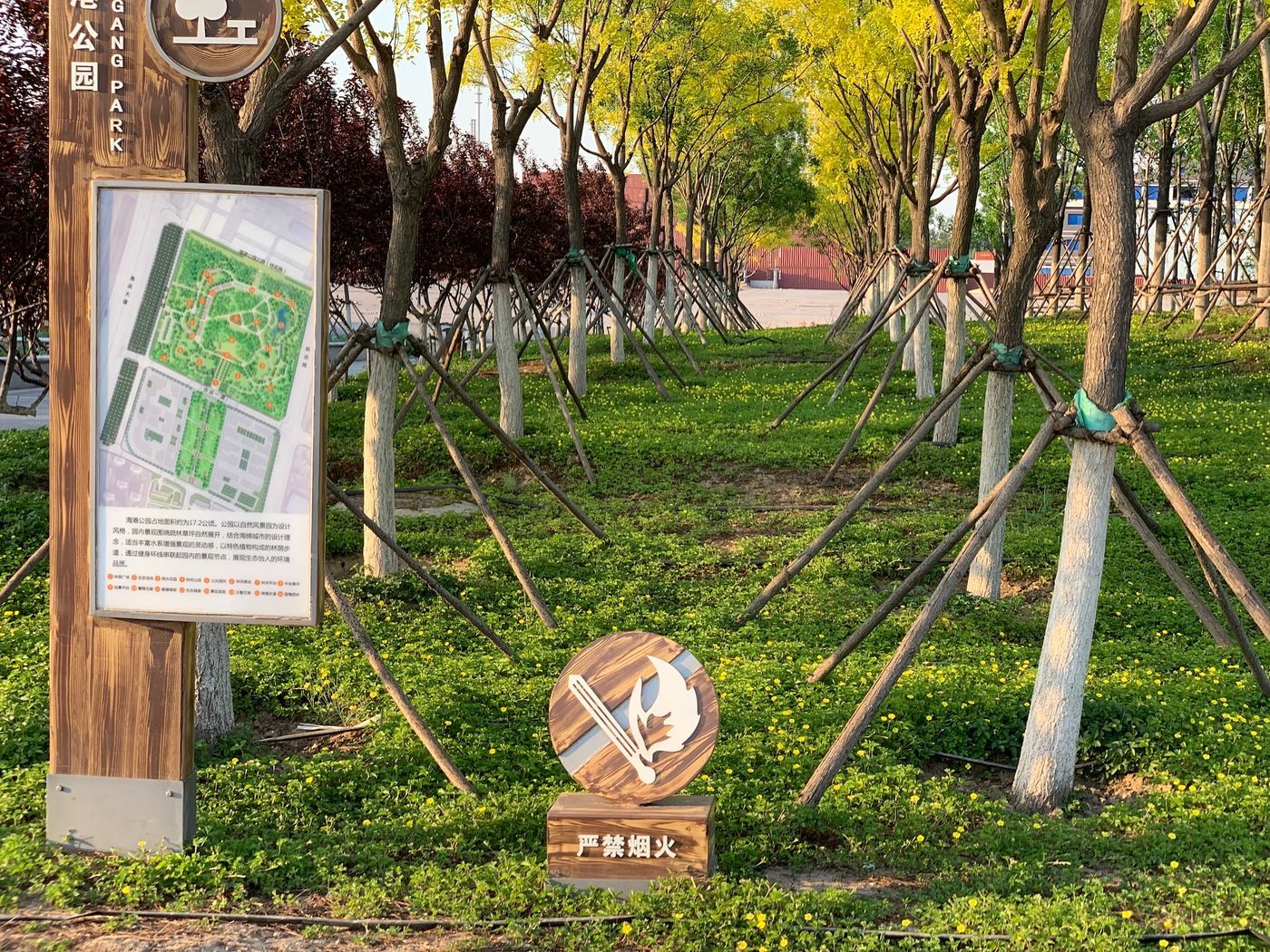
Needless to say, as you can guess, this park doesn't have a word about the disaster that happened just four years ago. If you are not a local, if you have not checked the relevant information, first of all, you will not come here deliberately, and you will not know the past here.
It's just that when I saw the warning words "Do not bring any dangerous items" and "No smoking" in the column of tourist information, my heart was still a little shaken.

The park is complete, but it's not hard to notice when wandering inside that you're in a harbour warehouse area; lorries can be heard, and the container yard is just behind. I was a little surprised that this place is so close to the residential area, just across the road is the primary school and the residential area. Not to mention that the original storage of dangerous goods involves illegal operations, and there is also the problem of chaotic urban planning land. The explosion not only damaged primary schools and residential areas, but also caused casualties. It is known that some media later interviewed the residents of this community, but the report was quickly deleted, and online discussions were also banned. In turn, there are reports that local residents only want the park to be a place to walk dogs and exercise, and do not want a memorial hall or a monument. In a country of speech surveillance, sorry I can only be skeptical about these claims.
I really want a monument to be erected here to honor the hundreds of firefighters who have died or gone missing here. The sacrifice of firefighters must be remembered, because here the problems of the system are revealed. Many of the firefighters who died in the Tianjin bombings did not belong to the civil service establishment. The firefighter system in mainland China has been criticized for a long time. Young men with little experience and professional knowledge rushed into the fire with blood and flesh, and were portrayed as heroes by the official media after their deaths; however, they were sacrificed in vain because of their lack of full-time training. However, the problem is not taken seriously, such a system is neither scientific nor humane. The professionalization of firefighting has only been systematically addressed in recent years, but this reform has been delayed by more than a few decades. It is often said that the superiority of the Chinese system lies in its "fastness". Aren't the skyscrapers mentioned above built very fast? For these young firefighters, however, the slow pace of reform highlights a different kind of "China speed." Therefore, build a monument for these firefighters, so that the Chinese people can calm down and keep a little sanity while praising the development of the country, so that the so-called self-confidence of a big country does not need to be based on one-sided understanding under the censorship of speech, so that everyone can talk less about humiliation Emotions, and more objective understanding, are very important.
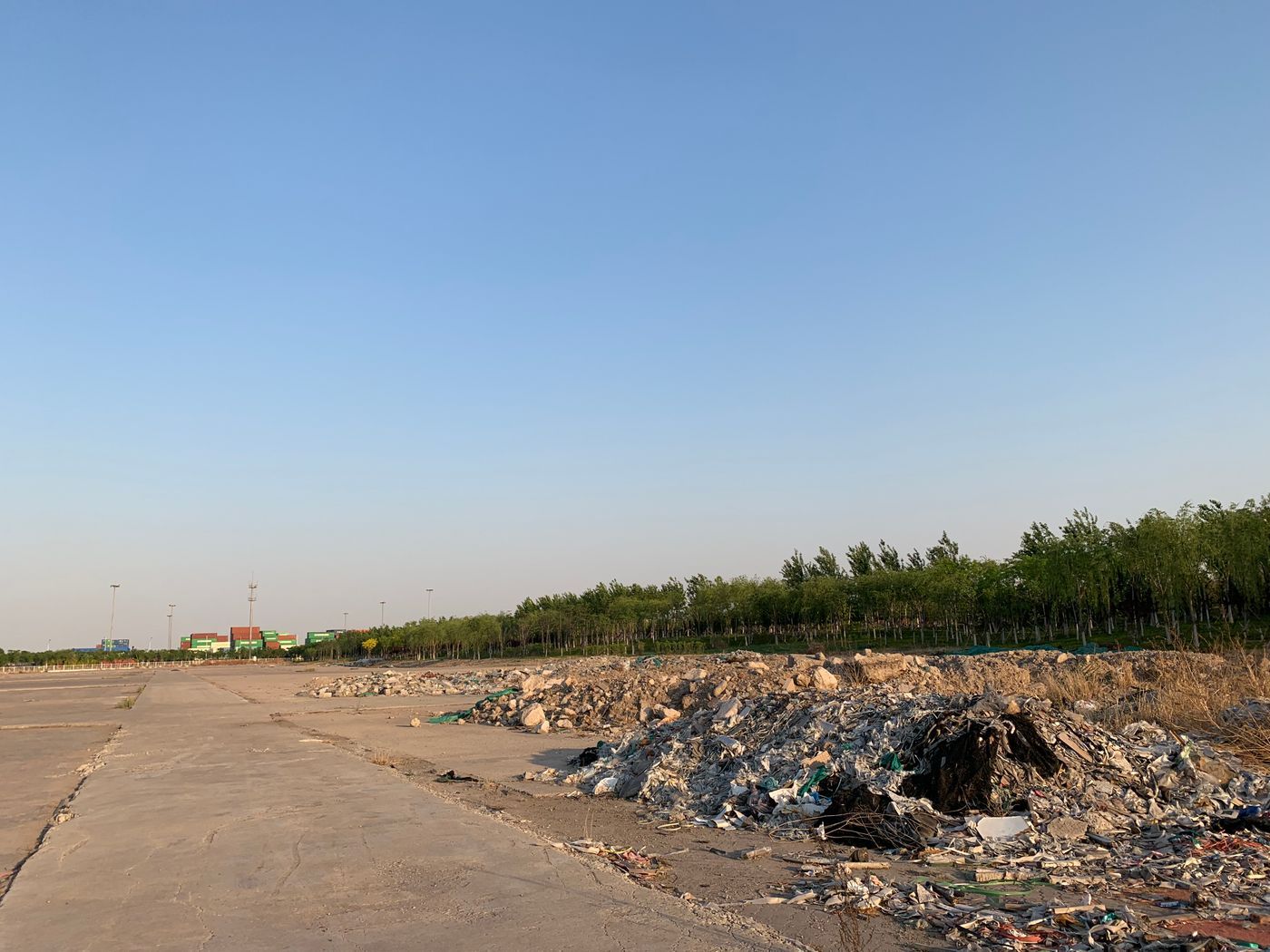
When I came out of the north gate of Harbour Park, I finally saw the original appearance of this open-air warehouse. After sunset, I took the high-speed train and left the Binhai New Area.
Chinese netizens often praise China's large-scale construction as "infrastructure madman"; when I came to Binhai New Area, I found that the museums that claim to take history as a mirror fail to fully describe history. The most attractive thing about the most beautiful library is not the book, but a whole piece of No one is working in the newly built office building, and heroes who should be commemorated are not commemorated... All of this is indeed very magical. More than 40 years of reform and opening up, institutional bottlenecks have become very obvious. Some practices, regardless of whether the past has brought more benefits or more disadvantages, will definitely become a burden if we don’t change our minds from the future. I'm just afraid that the illusory bubble has become too powerful, the vested interests have become intertwined, and collective bargaining has become a habit, and when the next disaster comes, it will be powerless to recover.
Or, this disaster may have come.
Attraction recommendation:
Dagu Fortress Ruins https://surl.amap.com/z4wydV1jfuT
Tianjin Binhai Cultural Center https://surl.amap.com/g3CVzW1tdSf
Yujiapu Financial District https://surl.amap.com/4ww0htZW5f0
Harbour Park https://surl.amap.com/awU3OMS6Km
Like my work?
Don't forget to support or like, so I know you are with me..
Comment…